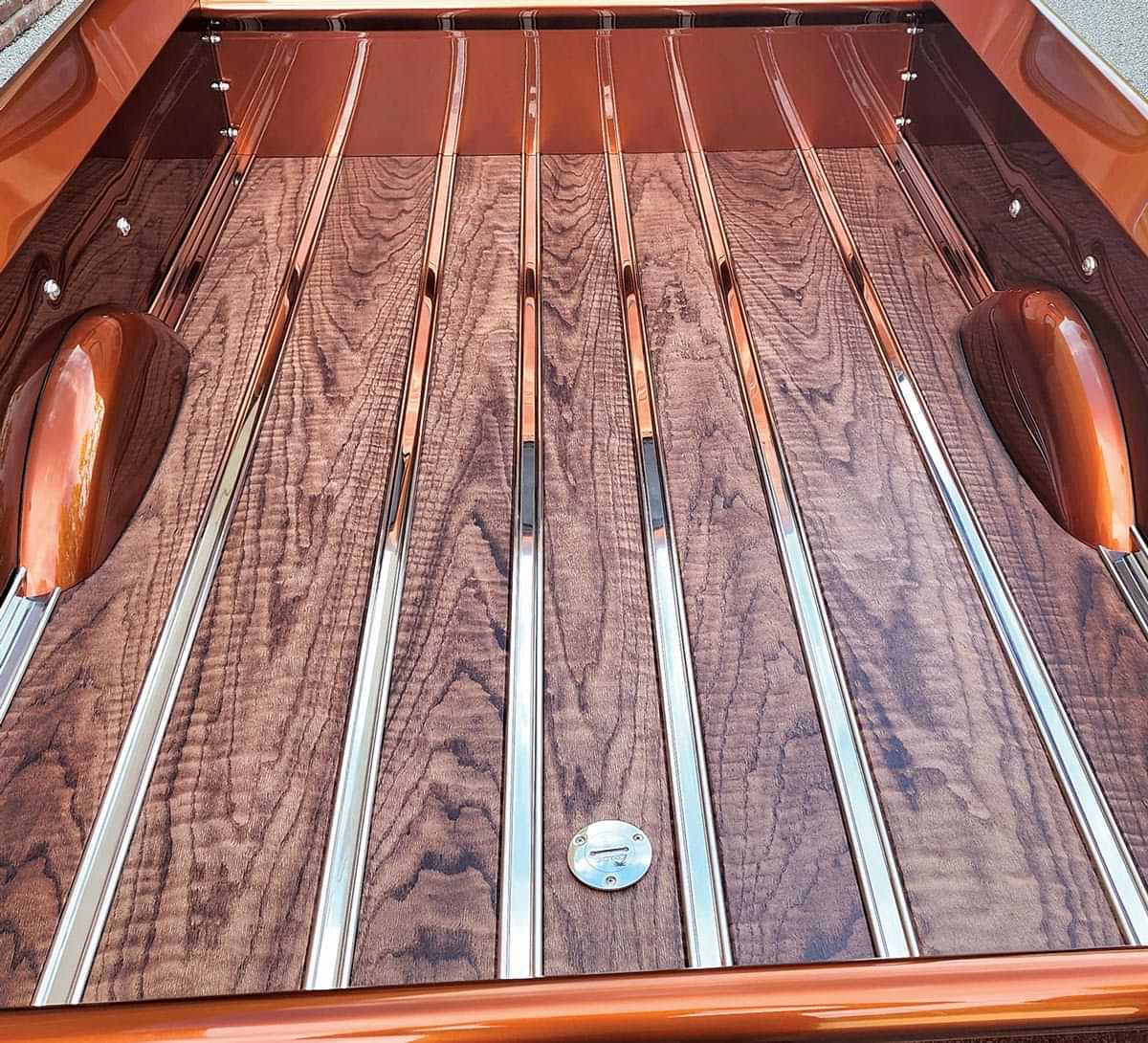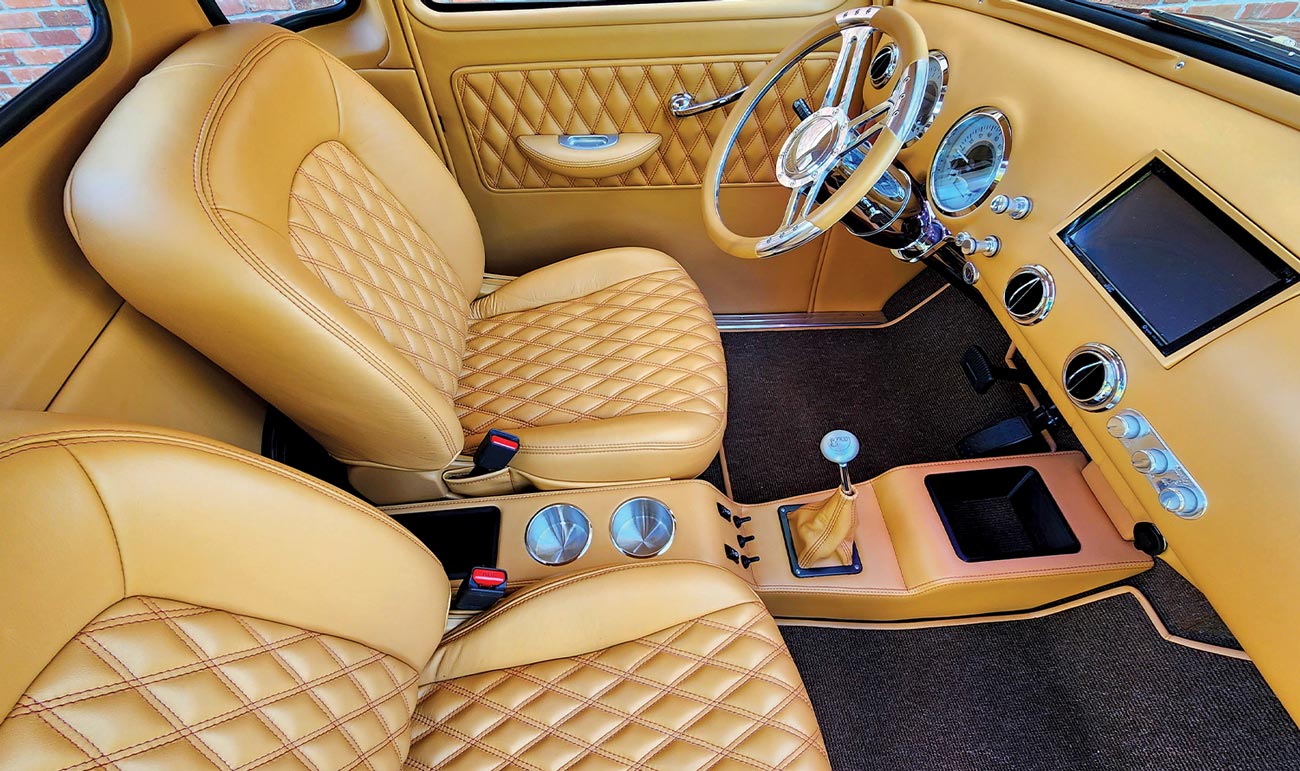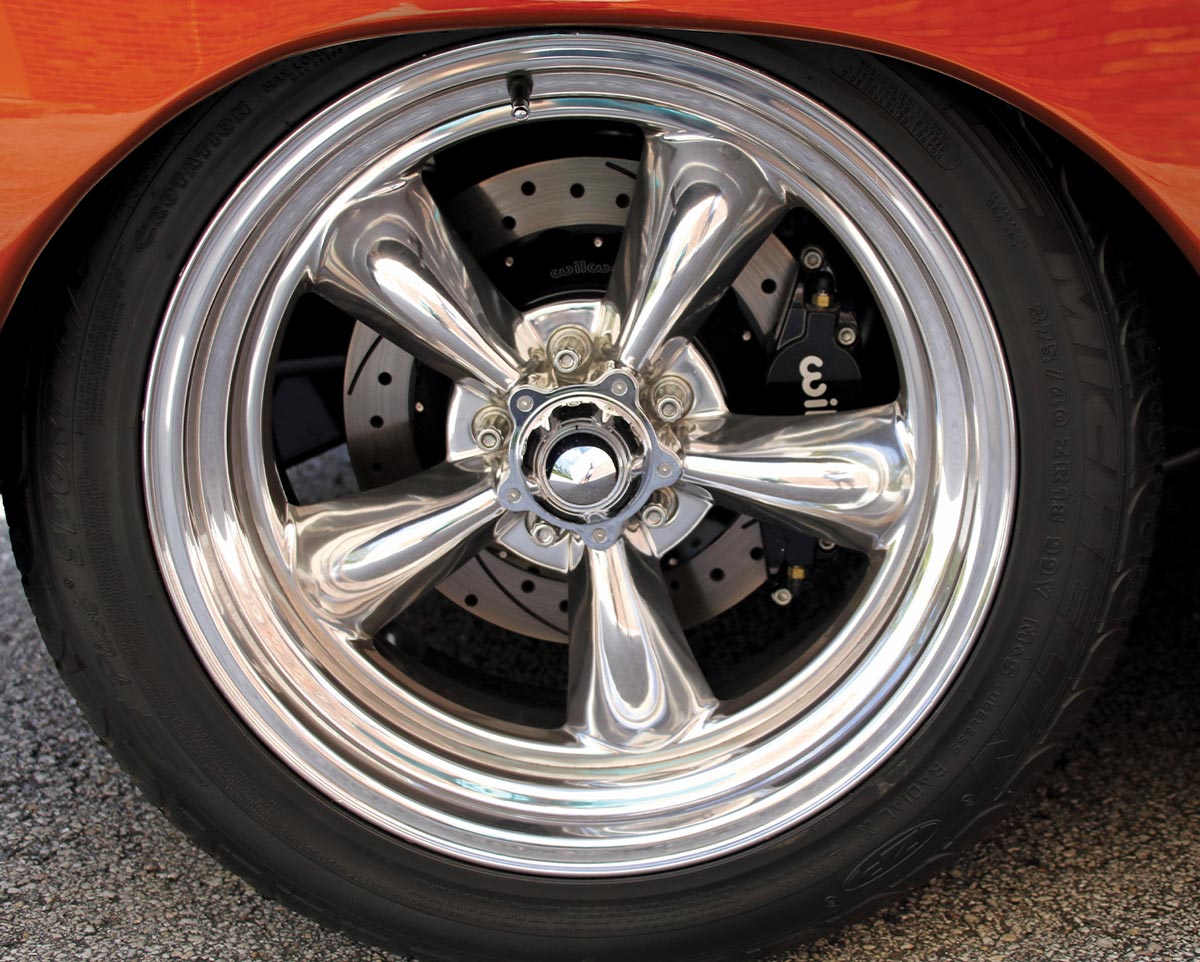InTheGarageMedia.com


Photography by THE AUTHOR
he early trucks of 1947-55 were known as the Advance Design series. The war was over and GM felt the need to redesign the truck models into a bolder, stronger, up-to-date look with bigger platforms compared to the previous AK Series trucks. Postwar demand fueled the changes to keep up with businesses that were booming and wanted more room with a bigger payload capability.
Fast-forward to 2023 and to Tom Taxon’s beautiful ’50 Chevrolet 3100 series pickup. No stranger to building his own cars, as he owns a cool ’56 Olds Rocket 88, a ’32 Ford roadster, and ’40 Ford coupe. By trade he is a fabricator/tool and die maker and loves building and working on his own rides. Tom did almost all the work on the pickup, some chassis modifications for the fuel tank mounting, as well as exhaust, wiring, plumbing, and he also shared in the tedious final reassembly.
Tom started out as a tool and die maker early in his work life, migrating into mechanical engineering and production management at a small manufacturing company. Over the years, Tom managed a sheetmetal fabrication company, then joined a video and arcade game startup in the late ’70s. He joined an engineering consulting firm in 1983, and in 1989 moved to Bally Technologies. There he worked as vice president of hardware engineering for 18 of 21 years until retirement in 2010. So, you know the skill level was there to tackle such a project as this.
It all started after Tom saw an old ’49 red 3100 pickup at a car show several years ago (2016) in Daytona Beach. It had a For Sale sign on it and when he inquired about it the owner said it had some mechanical bugs (bad head gasket for one) that the owner would fix before selling it. He chased that one for about a month, gave up, and decided to jump in and just build what he wanted from scratch. He has built a few street rods after all and with his engineering and building experience, why not?
Tom started with the basics, such as the frame, engine, transmission, suspension, and brakes from Art Morrison. Not one to mess around, he started with fresh parts gathered, fitted, and planned to create a better foundation for his ’50 Chevy pickup.



After many attempts to get the front end, hood, fenders, grille, headlights, and front roll pan all fitted properly he decided “half of being smart is knowing what you’re dumb at,” so he enlisted Jeff’s Restorations in Holly Hill, Florida, to help him out. Although he had painted a few cars in the past, he felt that this one was special and needed a professional touch. They had done some projects previously for Tom and did amazing work.
Body parts, cab, fenders, grille, hood, bedsides, and tailgate were a mix of old and new parts. Original parts, if he didn’t have them already, or were too far gone to reuse, were sourced from all over. Swap meets, online shopping, car shows, as well as more reproduction parts were purchased from an array of suppliers/vendors over a span of about four years. Total build time was six years.
Mar-K bedsides, tailgate, and front panels were modified by Tom to be able to raise the bed floor 2 inches. Dan Carpenter wheeltubs were then modified and installed by Tom. The bed floor is a Smokey Road Shop laminated aluminum floor. Another modification was to integrate ’39 Lincoln taillights to the end of the bedsides. He chuckles that he has two Chevy motors in his two Fords so he thought it wouldn’t hurt to have a little Ford stuff on his Chevy.
The cab was a challenge with considerable effort placed into smoothing the firewall. Firewall mods were made to smooth the overall surface and change the recesses to accommodate the LS3 engine. The dash was also modified and is now fitted with A/C vents. The glovebox and door were removed, smoothed over, now allowing the Vintage Air Gen IV A/C unit to be mounted up and out of the way. A double-DIN radio head was also integrated at this time, which provides for cool sounds, a rearview camera, GPS, and other usable features. The signature features of the dash are the Dakota Digital VHX gauges. Remember, Tom did all the hands-on work himself in his well-appointed shop. Tom tells us, “It was tedious but fun.”
The bucket seats were from a wrecked ’18 Nissan placed on hinged seat risers that allow access underneath to the ECM and Ron Francis fuse panel. Tom cut the seats down some 3 inches to keep each of the seat backs below the rear window. He also built a custom console that houses a Lokar floor shifter.

Tom commented that while a six-speed was initially planned, the change to a 6L80 automatic would add to the truck’s overall ease of driving.
Door modifications included the Kindig It Design recessed door handles. The linkage to the bearclaw latches was interesting, but Tom did enjoy making the intricate design.


Other notables in the build are Michelin Pilot Sport A/S plus 275/R18 run flats on all four corners mounted on a set of American Racing Custom Torq Thrust wheels (18×9.5 with 6-inch in front and 5-inch offset in the rear). It stops via Willwood 13-inch drilled-and-slotted rotors with six-piston fronts and four-piston rear calipers and a Wilwood master cylinder.
It’s powered by a Chevrolet LS376-480 crate motor prepared with a March Performance LS Pro Track serpentine system finished in black and Art Morrison Enterprises (AME) headers. The keystone to this truck’s underpinnings is an AME GT Sport chassis. The chassis components are more AME, such as the coilovers, front and rear sway bars, and a four-link and Ford 9-inch rearend with Tru-Trac limited-slip 3.50 gears and Strange 31-spline axles. Exhaust is channeled out through a 2-1/2-inch stainless steel exhaust with MagnaFlow Performance mufflers. He added electric exhaust cutouts for a bit of fun.
It gets its “go” juice from a Rick’s Hot Rods 17-gallon capacity tank specifically designed to work with the AME chassis. He had to modify it still to allow its removal from underneath. This would allow easier access to the fuel pump, fuel sending unit, or the tank itself, if needed.
Tom Taxon’s version of what Chevrolet first had envisioned as an “Advance Design” concept certainly gets our vote for one gorgeous build.
VOLUME 5 • ISSUE 40 • 2024